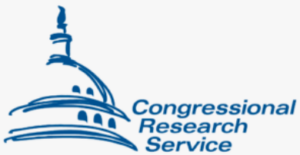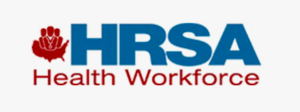- Eight Hospitals Selected for First Cohort of Rural Hospital Stabilization Program
- Announcing the 2030 Census Disclosure Avoidance Research Program
- CMS: Medicare Program; Hospital Inpatient Prospective Payment Systems for Acute Care Hospitals and the Long-Term Care Hospital Prospective Payment System and Policy Changes and Fiscal Year 2026 Rates; Requirements for Quality Programs; and Other Policy Changes; Correction
- CMS: Medicare Program; Hospital Inpatient Prospective Payment Systems for Acute Care Hospitals and the Long-Term Care Hospital Prospective Payment System and Policy Changes and Fiscal Year 2026 Rates; Requirements for Quality Programs; and Other Policy Changes; Correction
- CMS: Medicare and Medicaid Programs; Contract Year 2026 Policy and Technical Changes to the Medicare Advantage Program, Medicare Prescription Drug Benefit Program, Medicare Cost Plan Program, and Programs of All-Inclusive Care for the Elderly; Correction
- CMS: Medicare and Medicaid Programs; Contract Year 2026 Policy and Technical Changes to the Medicare Advantage Program, Medicare Prescription Drug Benefit Program, Medicare Cost Plan Program, and Programs of All-Inclusive Care for the Elderly; Correction
- CMS: Medicare Program; Prospective Payment System and Consolidated Billing for Skilled Nursing Facilities; Updates to the Quality Reporting Program for Federal Fiscal Year 2026
- CMS: Medicare Program; FY 2026 Hospice Wage Index and Payment Rate Update and Hospice Quality Reporting Program Requirements
- Public Inspection: CMS: Medicare Program: Prospective Payment System and Consolidated Billing for Skilled Nursing Facilities; Updates to the Quality Reporting Program for Federal Fiscal Year 2026
- Public Inspection: CMS: Medicare Program: Fiscal Year 2026 Hospice Wage Index and Payment Rate Update and Hospice Quality Reporting Program Requirements
- CMS: Request for Information; Health Technology Ecosystem
- CMS: Medicare and Medicaid Programs; CY 2025 Payment Policies Under the Physician Fee Schedule and Other Changes to Part B Payment and Coverage Policies; Medicare Shared Savings Program Requirements; Medicare Prescription Drug Inflation Rebate Program; and Medicare Overpayments; and Appeal Rights for Certain Changes in Patient Status; Corrections and Correcting Amendment
- CMS: Medicare and Medicaid Programs; CY 2025 Payment Policies Under the Physician Fee Schedule and Other Changes to Part B Payment and Coverage Policies; Medicare Shared Savings Program Requirements; Medicare Prescription Drug Inflation Rebate Program; and Medicare Overpayments; and Appeal Rights for Certain Changes in Patient Status; Corrections and Correcting Amendment
- VA: Staff Sergeant Fox Suicide Prevention Grant Program Funding Opportunity
- State: 60-Day Notice of Proposed Information Collection: J-1 Visa Waiver Recommendation Application
Analyzing Rural Enrollment in Qualified Medicare Beneficiary Program Lags Behind Urban
 The latest Report to Congress from the non-partisan Medicaid and Children’s Health Insurance Program (CHIP) Payment and Access Commission (MACPAC) shows that the number of rural Qualified Medicare Beneficiaries (QMBs) who also receive full Medicaid benefits stayed relatively the same between 2010 and 2021, while the number living in urban areas increased. These “QMB plus” enrollees receive assistance from Medicaid with their Medicare premiums and cost sharing plus full Medicaid benefits through eligibility pathways, such as Supplemental Security Income benefits and the aged, blind, and disabled pathway for individuals who are low income and age 65 or older or who have a qualifying disability. This growing disparity between urban and rural enrollment may indicate that there are opportunities for future outreach to enroll more eligible rural enrollees in this assistance program. This report also provides recommendations to Congress to increase transparency in Medicaid and CHIP financing, tools that states can use to optimize state Medicaid agency contracts, and improvements to demographic data collection in Medicaid.
The latest Report to Congress from the non-partisan Medicaid and Children’s Health Insurance Program (CHIP) Payment and Access Commission (MACPAC) shows that the number of rural Qualified Medicare Beneficiaries (QMBs) who also receive full Medicaid benefits stayed relatively the same between 2010 and 2021, while the number living in urban areas increased. These “QMB plus” enrollees receive assistance from Medicaid with their Medicare premiums and cost sharing plus full Medicaid benefits through eligibility pathways, such as Supplemental Security Income benefits and the aged, blind, and disabled pathway for individuals who are low income and age 65 or older or who have a qualifying disability. This growing disparity between urban and rural enrollment may indicate that there are opportunities for future outreach to enroll more eligible rural enrollees in this assistance program. This report also provides recommendations to Congress to increase transparency in Medicaid and CHIP financing, tools that states can use to optimize state Medicaid agency contracts, and improvements to demographic data collection in Medicaid.
Examining Risk Factors for Poor Health Among U.S. Older Adults in Rural and Urban Areas: Injury, Food Insecurity, and Lack of Social and Emotional Support
 Among key findings in this brief from the University of Minnesota Rural Health Research Center:
Among key findings in this brief from the University of Minnesota Rural Health Research Center:
- Nearly 30 percent of rural and urban older adults reported experiencing at least one of the selected risk factors (injury, food insecurity, or lack of social and emotional support).
- Of the three risk factors, lack of social and emotional support was the most common, reported by over 18 percent of older adults from both rural and urban areas.
- Injury was the second-most reported risk factor and was more commonly reported by rural than urban older adults.
- Food insecurity was experienced by a slightly higher percentage of rural older adults than those in urban areas.
Participate in the HRSA Grantee Satisfaction Survey
 – Deadline Extended. Each program director of active HRSA grants has received an invitation to take our new and improved Grantee Satisfaction Survey. With the highest possible response rate through June 24, we can pinpoint crucial areas for action. For general questions about the survey, contact HRSAGranteeSurvey@hrsa.gov
– Deadline Extended. Each program director of active HRSA grants has received an invitation to take our new and improved Grantee Satisfaction Survey. With the highest possible response rate through June 24, we can pinpoint crucial areas for action. For general questions about the survey, contact HRSAGranteeSurvey@hrsa.gov
CRS Answers FAQs about Federal Funding for Health Care Facilities
 The Congressional Research Service (CRS) compiles Frequently Asked Questions (FAQ) with background information on federal programs, including those that may be available to support facilities during an emergency or natural disaster. There are many references to rural throughout, describing facility types, payment models, and rural-specific funding.
The Congressional Research Service (CRS) compiles Frequently Asked Questions (FAQ) with background information on federal programs, including those that may be available to support facilities during an emergency or natural disaster. There are many references to rural throughout, describing facility types, payment models, and rural-specific funding.
White House Releases Factsheet Highlighting Efforts Toward Cybersecurity in Healthcare
 Responding to recent cyber attacks in the health care sector, the White House outlined a number of actions to mitigate further disruption to providers and patients. The factsheet notes rural providers such as Critical Access Hospitals and Rural Emergency Hospitals are particularly vulnerable and details commitments from leading technology companies to provide free and low-cost resources for rural hospitals across the country.
Responding to recent cyber attacks in the health care sector, the White House outlined a number of actions to mitigate further disruption to providers and patients. The factsheet notes rural providers such as Critical Access Hospitals and Rural Emergency Hospitals are particularly vulnerable and details commitments from leading technology companies to provide free and low-cost resources for rural hospitals across the country.
HRSA Makes Awards for the Rural Health Network Development Planning Program

The Federal Office of Rural Health Policy, located in HRSA, awarded approximately $3 million to 30 awardees through the Rural Health Network Development Planning Program to support organizations in their efforts to develop integrated health networks to conduct planning activities over the course of one year, with the goal of expanding access and improving quality of care in the rural communities they serve. The project period is July 1, 2024 through June 30, 2025.
HRSA Invests $11 Million to Expand Medical Residencies in Rural Communities

Today, HRSA announced awards of more than $11 million to 15 organizations to strengthen the health workforce in rural areas. Administered through the Federal Office of Rural Health Policy, located within HRSA, the Rural Residency Planning and Development Program supports the planning and establishment of new residency training programs in family medicine, internal medicine, psychiatry, preventive medicine, obstetrics and gynecology, and general surgery. HRSA-funded research has found that more than half of rural U.S. counties lack hospital obstetric services. In response to the declining rural access to maternal health care, one of the awards will be used to create the first obstetrics and gynecology Rural Track Program in the country. Another six of today’s 15 awards will be used to develop new family medicine residency programs with a focus on enhanced obstetrical training in rural communities. Award recipients will each receive up to $750,000 over three years to establish new rural residency programs. They will use this funding to support accreditation costs, curriculum development, faculty recruitment and retention, resident recruitment activities, and consultation services to inform program development. These awards complement efforts by the Administration and by Congress to reform and expand Medicare payment policies for residency training.
National Dental and Fluoridation Associations Respond to New Fluoride Study
The Journal of the American Medical Association (JAMA) recently published a study that examined fluoride exposure during pregnancy. In response to the release of the study, the American Dental Association and American Fluoridation Society released statements and resources affirming support of fluoride for oral health.
Click here to read the American Dental Association statement.
Click here to read the American Fluoridation Society Key Messages.
HRSA Releases Updated HPSA Data

The U.S. Department of Health and Human Services’ Health Resources & Services Administration (HRSA) released updated data on Health Professional Shortage Areas (HPSAs). In addition, they updated the number of additional dental health practitioners needed to support the HPSAs. The number of HPSAs has grown nationwide since February. The updated data are available on the HPSA dashboard.
Final Recommendation Statement: Implementing Interventions to Prevent Falls in Community-Dwelling Older Adults

The U.S. Preventive Services Task Force released a final recommendation statement on interventions to prevent falls in community-dwelling older adults. The Task Force found that exercise can help prevent falls in adults 65 and older who are at increased risk. Additional interventions might be helpful for some older adults. To view the recommendation, the evidence on which it is based, and a summary for clinicians, please go here.
